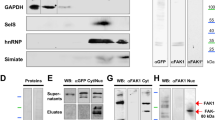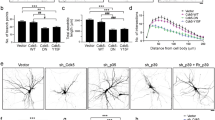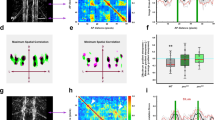Abstract
Dendritic arborization is required for proper neuronal connectivity. Rho GTPases have been implicated in the regulation of dendrite development. However, the signaling pathways that impinge on these molecular switches remain poorly understood. Here we show that Wnt7b, which is expressed in the mouse hippocampus, increases dendritic branching in cultured hippocampal neurons. This effect is mimicked by the expression of Dishevelled (Dvl) and is blocked by Sfrp1, a secreted Wnt antagonist. Consistent with these findings, hippocampal neurons from mice lacking Dvl1 show reduced dendritic arborization. Activation of the canonical Wnt-Gsk3β pathway does not affect dendritic development. In contrast, Wnt7b and Dvl activate Rac and JNK in hippocampal neurons. Dominant-negative Rac, dominant-negative JNK or inhibition of JNK blocks Dvl-mediated dendritic growth. These findings demonstrate a new function for the non-canonical Wnt pathway in dendrite development and identify Dvl as a regulator of Rho GTPases and JNK during dendritic morphogenesis.
This is a preview of subscription content, access via your institution
Access options
Subscribe to this journal
Receive 12 print issues and online access
$209.00 per year
only $17.42 per issue
Buy this article
- Purchase on Springer Link
- Instant access to full article PDF
Prices may be subject to local taxes which are calculated during checkout








Similar content being viewed by others
References
Jan, Y.N. & Jan, L.Y. The control of dendrite development. Neuron 40, 229–242 (2003).
Miller, F.D. & Kaplan, D.R. Signaling mechanisms underlying dendrite formation. Curr. Opin. Neurobiol. 13, 391–398 (2003).
Polleux, F., Morrow, T. & Ghosh, A. Semaphorin 3A is a chemoattractant for cortical apical dendrites. Nature 404, 567–573 (2000).
Whitford, K.L. et al. Regulation of cortical dendrite development by Slit-Robo interactions. Neuron 33, 47–61 (2002).
McAllister, A.K., Katz, L.C. & Lo, D.C. Opposing roles for endogenous BDNF and NT-3 in regulating cortical dendritic growth. Neuron 18, 767–778 (1997).
Guo, X. et al. Dendritic growth induced by BMP-7 requires Smad1 and proteasome activity. J. Neurobiol. 48, 120–130 (2001).
Threadgill, R., Bobb, K. & Ghosh, A. Regulation of dendritic growth and remodeling by Rho, Rac, and Cdc42. Neuron 19, 625–634 (1997).
Luo, L. Actin cytoskeleton regulation in neuronal morphogenesis and structural plasticity. Annu. Rev. Cell Dev. Biol. 18, 601–635 (2002).
Whitford, K.L., Dijkhuizen, P., Polleux, F. & Ghosh, A. Molecular control of cortical dendrite development. Annu. Rev. Neurosci. 25, 127–149 (2002).
Ruchhoeft, M.L., Ohnuma, S., McNeill, L., Holt, C.E. & Harris, W.A. The neuronal architecture of Xenopus retinal ganglion cells is sculpted by rho-family GTPases in vivo. J. Neurosci. 19, 8454–8463 (1999).
Li, Z., Van Aelst, L. & Cline, H.T. Rho GTPases regulate distinct aspects of dendritic arbor growth in Xenopus central neurons in vivo. Nat. Neurosci. 3, 217–225 (2000).
Lee, T., Winter, C., Marticke, S.S., Lee, A. & Luo, L. Essential roles of Drosophila RhoA in the regulation of neuroblast proliferation and dendritic but not axonal morphogenesis. Neuron 25, 307–316 (2000).
Nakayama, A.Y., Harms, M.B. & Luo, L. Small GTPases Rac and Rho in the maintenance of dendritic spines and branches in hippocampal pyramidal neurons. J. Neurosci. 20, 5329–5338 (2000).
Lucas, F.R. & Salinas, P.C. WNT-7a induces axonal remodeling and increases synapsin I levels in cerebellar neurons. Dev. Biol. 192, 31–44 (1997).
Hall, A.C., Lucas, F.R. & Salinas, P.C. Axonal remodeling and synaptic differentiation in the cerebellum is regulated by WNT-7a signaling. Cell 100, 525–535 (2000).
Krylova, O. et al. WNT-3, Expressed by Motoneurons, Regulates Terminal Arborization of Neurotrophin-3-Responsive Spinal Sensory Neurons. Neuron 35, 1043–1056 (2002).
Yoshikawa, S., McKinnon, R.D., Kokel, M. & Thomas, J.B. Wnt-mediated axon guidance via the Drosophila Derailed receptor. Nature 422, 583–588 (2003).
Huelsken, J. & Birchmeier, W. New aspects of Wnt signaling pathways in higher vertebrates. Curr. Opin. Genet. Dev. 11, 547–553 (2001).
Habas, R., Dawid, I.B. & He, X. Coactivation of Rac and Rho by Wnt/Frizzled signaling is required for vertebrate gastrulation. Genes Dev. 17, 295–309 (2003).
Winter, C.G. et al. Drosophila Rho-associated kinase (Drok) links Frizzled-mediated planar cell polarity signaling to the actin cytoskeleton. Cell 105, 81–91 (2001).
Strutt, D.I., Weber, U. & Mlodzik, M. The role of RhoA in tissue polarity and Frizzled signalling. Nature 387, 292–295 (1997).
Sheldahl, L.C. et al. Dishevelled activates Ca2+ flux, PKC, and CamKII in vertebrate embryos. J. Cell Biol. 161, 769–777 (2003).
Krylova, O., Messenger, M.J. & Salinas, P.C. Dishevelled-1 regulates microtubule stability: a new function mediated by glycogen synthase kinase-3beta. J. Cell Biol. 151, 83–94 (2000).
Lucas, F.R., Goold, R.G., Gordon-Weeks, P.R. & Salinas, P.C. Inhibition of GSK-3beta leading to the loss of phosphorylated MAP-1B is an early event in axonal remodelling induced by WNT-7a or lithium. J. Cell Sci. 111, 1351–1361 (1998).
Ciani, L., Krylova, O., Smalley, M., Dale, T.C. & Salinas, P.C. A divergent canonical WNT signalling pathway regulates microtubule dynamics: Dishevelled signals locally to stabilize microtubules. J. Cell Biol. 164, 243–253 (2004).
Pokorny, J. & Yamamoto, T. Postnatal ontogenesis of hippocampal CA1 area in rats. I. Development of dendritic arborisation in pyramidal neurons. Brain Res. Bull. 7, 113–120 (1981).
Rattner, A. et al. A family of secreted proteins contains homology to the cysteine-rich ligand-binding domain of frizzled receptors. Proc. Natl. Acad. Sci. USA 94, 2859–2863 (1997).
Habas, R., Kato, Y. & He, X. Wnt/Frizzled activation of rho regulates vertebrate gastrulation and requires a novel formin homology protein daam1. Cell 107, 843–854 (2001).
Sussman, D.J. et al. Isolation and characterization of a mouse homolog of the Drosophila segment polarity gene dishevelled. Dev. Biol. 166, 73–86 (1994).
Yanagawa, S.I., Van Leeuwen, F., Wodarz, A., Klingensmith, J. & Nusse, R. The dishevelled protein is modified by wingless signaling in Drosophila. Genes Dev. 9, 1087–1095 (1995).
Penton, A., Wodarz, A. & Nusse, R. A Mutational Analysis of dishevelled in Drosophila Defines Novel Domains in the Dishevelled Protein as Well as Novel Suppressing Alleles of axin. Genetics 161, 747–762 (2002).
Axelrod, J.D., Miller, J.R., Shulman, J.M., Moon, R.T. & Perrimon, N. Differential recruitment of Dishevelled provides signaling specificity in the planar cell polarity and Wingless signaling pathways. Genes Dev. 12, 2610–2622 (1998).
Lijam, N. et al. Social interaction and sensorimotor gating abnormalities in mice lacking Dvl1. Cell 90, 895–905 (1997).
Klein, P.S. & Melton, D.A. A molecular mechanism for the effect of lithium on development. Proc. Natl. Acad. Sci. USA 93, 8455–8459 (1996).
Meijer, L. et al. GSK-3-selective inhibitors derived from Tyrian purple indirubins. Chem. Biol. 10, 1255–1266 (2003).
Zhurinsky, J., Shtutman, M. & Ben-Ze'ev, A. Differential mechanisms of LEF/TCF family-dependent transcriptional activation by beta-catenin and plakoglobin. Mol. Cell. Biol. 20, 4238–4252 (2000).
Luo, L. Rho GTPases in neuronal morphogenesis. Nat. Rev. Neurosci. 1, 173–180 (2000).
Kuwahara, K. et al. The effects of the selective ROCK inhibitor, Y27632, on ET-1-induced hypertrophic response in neonatal rat cardiac myocytes–possible involvement of Rho/ROCK pathway in cardiac muscle cell hypertrophy. FEBS Lett. 452, 314–318 (1999).
Weston, C.R. & Davis, R.J. The JNK signal transduction pathway. Curr. Opin. Genet. Dev. 12, 14–21 (2002).
Bennett, B.L. et al. SP600125, an anthrapyrazolone inhibitor of Jun N-terminal kinase. Proc. Natl. Acad. Sci. USA 98, 13681–13686 (2001).
Dickens, M. et al. A cytoplasmic inhibitor of the JNK signal transduction pathway. Science 277, 693–696 (1997).
Coffey, E.T., Hongisto, V., Dickens, M., Davis, R.J. & Courtney, M.J. Dual roles for c-Jun N-terminal kinase in developmental and stress responses in cerebellar granule neurons. J. Neurosci. 20, 7602–7613 (2000).
Packard, M. et al. The Drosophila wnt, wingless, provides an essential signal for pre- and postsynaptic differentiation. Cell 111, 319–330 (2002).
Yu, X. & Malenka, R.C. beta-catenin is critical for dendritic morphogenesis. Nat. Neurosci. 6, 1169–1177 (2003).
Minden, A., Lin, A., Claret, F.X., Abo, A. & Karin, M. Selective activation of the JNK signaling cascade and c-Jun transcriptional activity by the small GTPases Rac and Cdc42Hs. Cell 81, 1147–1157 (1995).
Coso, O.A. et al. The small GTP-binding proteins Rac1 and Cdc42 regulate the activity of the JNK/SAPK signaling pathway. Cell 81, 1137–1146 (1995).
Chang, L., Jones, Y., Ellisman, M.H., Goldstein, L.S. & Karin, M. JNK1 is required for maintenance of neuronal microtubules and controls phosphorylation of microtubule-associated proteins. Dev. Cell 4, 521–533 (2003).
Wittmann, T., Bokoch, G.M. & Waterman-Storer, C.M. Regulation of leading edge microtubule and actin dynamics downstream of Rac1. J. Cell Biol. 161, 845–851 (2003).
Raftopoulou, M. & Hall, A. Cell migration: Rho GTPases lead the way. Dev. Biol. 265, 23–32 (2004).
Paglini, G. et al. Evidence for the participation of the neuron-specific CDK5 activator P35 during laminin-enhanced axonal growth. J. Neurosci. 18, 9858–9869 (1998).
Acknowledgements
We thank I. Simeonidis for breeding and genotyping Dvl1 mutant mice, S. Hughes and members of our lab for suggestions and comments on the manuscript, and K. Nobes, H. Xe, R. Kypta, J. Nathans and R. Davis for constructs. This work was funded by a Wellcome Trust grant (to P.C.S.).
Author information
Authors and Affiliations
Corresponding author
Ethics declarations
Competing interests
The authors declare no competing financial interests.
Supplementary information
Supplementary Fig. 1
Sfrp1 does not induce apoptosis. (a) Hippocampal neurons exposed to CM from EGFP-expressing cells or Sfrp1-expressing cells exhibit the same number of TUNEL-labelled apoptotic nuclei than controls. (b) Quantification of three independent experiments shows that the presence of Sfrp1 does not change the percentage of apoptotic neurons. (JPG 28 kb)
Supplementary Fig. 2
Dvl1 deficiency affects dendritic growth but no dendritic initiation. Hippocampal neurons from wildtype and Dvl1 mutant mice cultured for 3, 6 and 9 d in vitro were stained for MAP2 to analyse dendritic development. The graph shows that Dvl1 mutant cultured for 3 d in vitro have similar dendritic length to neurons from wildtype animals. At 6 d in vitro, however, Dvl1 mutant neurons have significantly shorter dendrites than wildtype neurons. At 9 d in vitro this difference in dendritic length is more pronounced. These results demonstrate that Dvl1 deficiency results in a pronounced delay in dendritic growth in older cultures. (GIF 8 kb)
Rights and permissions
About this article
Cite this article
Rosso, S., Sussman, D., Wynshaw-Boris, A. et al. Wnt signaling through Dishevelled, Rac and JNK regulates dendritic development. Nat Neurosci 8, 34–42 (2005). https://doi.org/10.1038/nn1374
Received:
Accepted:
Published:
Issue Date:
DOI: https://doi.org/10.1038/nn1374
This article is cited by
-
Non-canonical non-genomic morphogen signaling in anucleate platelets: a critical determinant of prothrombotic function in circulation
Cell Communication and Signaling (2024)
-
Apically localized PANX1 impacts neuroepithelial expansion in human cerebral organoids
Cell Death Discovery (2024)
-
Ischemia-reperfusion injury: molecular mechanisms and therapeutic targets
Signal Transduction and Targeted Therapy (2024)
-
Role of MARK2 in the nervous system and cancer
Cancer Gene Therapy (2024)
-
Morphological neurite changes induced by porcupine inhibition are rescued by Wnt ligands
Cell Communication and Signaling (2021)



